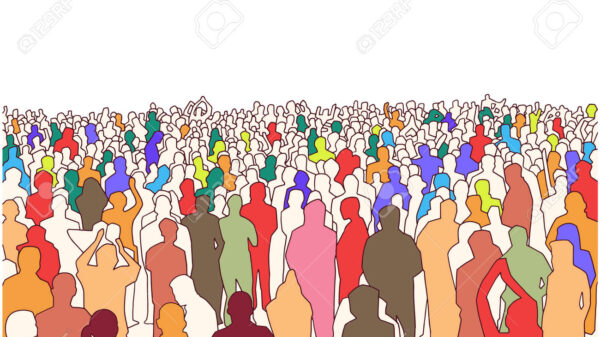

IN THE last month, Bangladesh has experienced a disturbing surge in violent incidents involving large groups acting outside the law. Recently, in less than a week, a teenage Hindu boy in Khulna was brutally assaulted and beaten by a mob in front of local police after being accused of defaming Hazrat Muhammad (pbuh) on social media. Concurrently, several groups have been vandalising renowned mazars across the country by creating open events on the social media platform Facebook. At the end of August, a group of students stormed the secretariat building and staged a prolonged demonstration, leading to the postponement of the previously scheduled Higher Secondary Certificate and equivalent examinations. These occurrences have sparked widespread concern, disrupting public order and threatening the core principles of democracy and social unity. The nature of these mobs — often mobilised by emotional or religious triggers — raises important questions about their relationship to the broader population and their manipulation by deeper political dynamics. In Bangladesh’s current socio-political climate, addressing the rise of mob justice culture as a political tool is crucial for the interim government to prevent further destabilisation of the country. Mob violence, when left unchecked, deepens societal divisions and erodes democratic norms, often serving as a means for political actors to consolidate or extend their influence. Understanding the formation and manipulation of these violent groups is essential for mitigating their impact on society.
What is a mob?
‘In crowds, the individual is submerged in the collective, and the conscious personality is replaced by the unconscious personality of the crowd.’ The statement constitutes the core argument of the French social psychologist Gustave Le Bon in his groundbreaking book The Crowd: A Study of the Popular Mind (1895). Le Bon posits that within a crowd, an individual’s conscious, rational identity is subsumed by the collective unconscious, resulting in a profound psychological transformation. This process leads to the erosion of personal agency and critical judgement as individuals become susceptible to the collective emotions and impulses that govern crowd ehavior. Consequently, crowd members often engage in actions they would otherwise avoid in isolation, driven by the crowd’s intensified emotional state and diminished sense of accountability.
This mob mentality enables ordinary individuals to commit extreme acts they might not consider in isolation. Most of the time the mob is driven by collective hysteria, often incited by misinformation, rumours, or emotions of hate.
Why mobs do not represent the masses
Mobs are frequently depicted as representing the will of the people; however, this is a deeply misleading notion. The key distinction between a mob and the mass population lies in behaviour and motivation. The mass population refers to the broader society, which, though diverse in opinions and interests, generally adheres to social norms, laws, and democratic processes. While the mass population may engage in protests or collective action, these are typically organised and peaceful, seeking change through institutional or other means.
Another French sociologist, Emile Durkheim, explores the concept of societal regulation and the importance of a shared moral order in his seminal work, The Division of Labor in Society (1893). In this book, Durkheim discusses how social cohesion is maintained through collective consciousness, which helps regulate individual behaviour and prevent disorder. A mob, however, represents a breakdown of that moral order, driven by short-term emotions such as anger, fear, or hatred, often fuelled by misinformation or manipulation. In this sense, a mob does not reflect the collective rationality of the mass population, but rather its most extreme and impulsive elements.
In other words, the mob does not represent the true will and spirit of the mass people as it is loud, disruptive, and aggressive. The violence and destruction caused by mobs are often mistaken for public opinion, but in reality, they are actions of a small, incited group. The attacks on mazars (shrines), often instigated by extremist sentiments, are a stark reminder of how religious nationalism can fuel mob violence. These acts do not reflect the broader Muslim community’s sentiments, yet they grab attention and create a false narrative.
The production and reproduction of mobs
THE phenomenon of mob violence is not merely a spontaneous eruption but is frequently constructed, reconstructed, and perpetuated for political, religious, and social purposes. In many cases, political authorities regulate populations through mechanisms of control, surveillance, and normalisation, which the French philosopher and theorist Michel Foucault calls ‘biopower.’ Biopower is a concept where political authorities exert control over populations, not just through overt disciplinary actions but also by shaping societal behaviours and responses. It operates by orchestrating mass unrest as a tool of governance and strategically producing and mobilising mobs to control dissent, creating a climate where public fear and unrest enable authorities to expand their reach under the guise of maintaining order. Through biopower, the state doesn’t merely react to mobs but often anticipates, shapes, and manipulates them, framing certain populations as threats to the social fabric and thus legitimising the use of violence or repression in response.
The Italian Marxist philosopher Antonio Gramsci’s idea of ‘hegemony’ complements Foucault’s understanding by highlighting how political, religious, or otherwise elites control not just the physical aspects of power but also the ideological ones. Hegemony involves shaping public consciousness, where the ruling class succeeds in normalising and even naturalising its values, beliefs, and norms as societal standards. In the case of mobs, they become a tool through which the ruling class manufactures consent or dissent, framing the mob as either the voice of the people or an enemy of the state depending on their strategic needs. By instigating or facilitating mob violence, political actors can manipulate public opinion, creating a narrative that strengthens their hegemony.
The political aspect is not always the dangerous aspect of constructing a mob where religious and social sentiments are deliberately inflamed to create a sense of crisis or moral outrage. By manipulating these sentiments, political actors can mobilise mobs to serve their own agendas. Religious sentiment, in particular, becomes a powerful tool in the hands of the ruling class, where perceived threats to religious identity or values are amplified, leading to large-scale emotional responses that are framed as righteous or necessary. In this sense, religious fervour becomes a mechanism of control, channeling collective action into violent outbursts that appear to defend religious sanctity but are often manipulated for political ends. As Gramsci puts it, mobs — when mobilised through religious rhetoric, religious identity, and values, deeply embedded within societal consciousness — help invoke religious outrage — whether it be through accusations of blasphemy or perceived desecration of sacred symbols. Thus, they create an ‘us versus them’ dynamic. This simplifies complex political situations into binary moral conflicts, allowing a group of power classes to present themselves as the defenders of religious purity while labelling dissenting voices or marginalised groups as enemies of the faith. This framing reproduces hegemonic control by ensuring that the population sees itself as protectors of the social and religious order rather than as agents manipulated by political interests.
In the context of Bangladesh, the strategic use of religious sentiment to incite mob violence is particularly pronounced. Religious fervour is often stirred by political leaders to exploit deeply held beliefs and mobilise people in defence of religious icons or values.
Mob attacks on mazars or assaults on individuals accused of blasphemy are often framed as protecting Islam, even though the violence serves political interests more than religious ones. The recent case in Khulna, where a Hindu boy was brutally beaten for allegedly defaming Hazrat Muhammad (phuh), illustrates how easily religious outrage can be harnessed to provoke mob violence. While the mob acted in the name of religious defence, its actions were shaped by some forces, reflecting the broader manipulation of religious sentiment for power.
The production and reproduction of mobs through religious sentiments is cyclical. Political actors continually reignite religious and social tensions, creating a constant supply of emotionally charged crowds ready to react. These mobs are often portrayed as defenders of religious values, but they serve to entrench the vested political party’s control over public discourse and social order. By keeping religious outrage simmering, a particular collective — religious or political — ensures that mobs can be mobilised whenever needed to suppress opposition or distract from political failings. The religious and social aspects of mob violence thus become tools of biopower and hegemony, ensuring that one particular group maintains its dominance by manipulating the collective consciousness, creating a narrative that deepens their hegemony.
Critical need for identifying and dealing with mobs
FOR democracy — or for that matter, any society — to function effectively, identifying and dealing with mob behaviour is essential, as mobs directly threaten the rule of law and the institutions that uphold democratic values. In Bangladesh, it is increasingly urgent to hold those responsible for inciting mob violence accountable. Mobs often operate under a distorted sense of moral superiority, where individuals collectively assume the roles of judge, jury, and executioner. This perceived righteousness fuels their belief that they have the right to punish others or vandalise structures, justifying their actions through a misguided sense of authority. Such behaviour undermines the judiciary by circumventing legal frameworks and other available processes, ultimately jeopardising the fabric of society.
Identifying and dealing with mob violence involves a multifaceted approach. Law enforcement must be equipped to prevent mob action before it escalates, and the judicial system must work swiftly to prosecute those involved in mob violence. At the same time, public awareness campaigns must be launched to educate the population on the dangers of mob mentality, dispelling the myth that mobs represent the people’s will. Furthermore, addressing the root causes of mob violence — political manipulation, misinformation, and social inequality — is critical to curbing this trend.
Since Bangladesh’s independence in 1971, mainstream political parties have frequently exploited religious or nationalist sentiments to mobilise mobs, especially during periods of political instability. However, during the more than fifteen-year tenure of the fascist Awami League regime, the country experienced a particularly stark and alarming rise in incidents of mob violence, whether driven by political or religious motives, where these mobs serve as both a distraction and a means of consolidating power by exploiting social divisions.
Bangladesh is at a crossroads where the rise of mobocracy threatens the spirit of the July mass uprising as well as the interim government’s reformist attempts. Mobs are not reflective of the mass population, but they are a powerful tool used by those who want to discredit and besmirch the achievement of the July uprising. To build a new Bangladesh in the spirit of the people’s uprising, it is imperative to recognise the destructive force of mob rule, hold those who incite mob violence accountable, and create a political culture that values reason, justice, and inclusivity. Only then can Bangladesh move beyond mobocracy towards a more promising future.
Tina Nandi is a Bangladeshi broadcast journalist currently admitted into the Middle Eastern and South Asian Studies Program at Columbia University, New York.